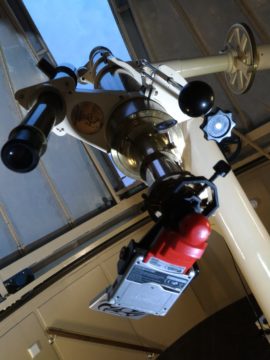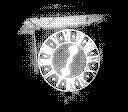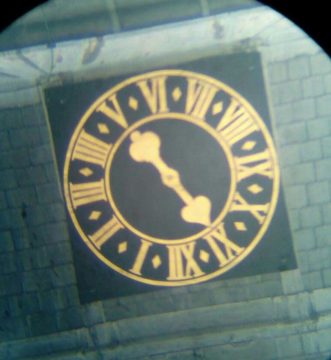Inspired by his love of astronomy and struck by the unique ways in which the Game Boy Camera had been harnessed, Alex Pietrow took to the internet to see what photos of space it had taken. When he found none, he took his own.
It is well established that people can make beautiful astronomical images with a DSLR camera. However, once one has a good feel for astrophotography, it can be interesting to try to work with equipment that would be considered sub par. For example, much progress has been made in using mobile phones with the goal of making astrophotography more accessible to laypeople. Of course, it can also be a fun way to pass the weekend.

Alex Pietrow
The Game Boy Camera is a monochrome, 2bit, 128×112 pixel CMOS camera from 1998 that was designed for the Nintendo Game Boy. It is well known as the first affordable portable digital camera and was actually considered decent in its day. These days, it is little more than a curiosity - certainly not intended for the serious photographer. Nevertheless, it is interesting to play with and especially to explore the limits of its capabilities. And what better way of testing a camera than imaging astronomical objects with it? Thinking this must have been thought of before, I searched the web - but to my surprise I came up empty handed! Therefore, I decided to give it a go myself and see what this thing could do.
Using the 1838 6'' Fraunhofer telescope in the Old Observatory of Leiden in combination with a “Gosky Universal Cell Phone Adapter”, it was relatively easy to properly align the camera with the telescope eyepiece. The biggest issue was a typical Dutch one: waiting for a cloudless night. Anxious to get started, I picked a target that did not need a clear sky, and aimed the telescope at a nearby church tower. Success! The camera seemed surprisingly well equipped to capture the details of the image. Below we can see the acquired picture and a modern photograph of the same target.

Alex Pietrow

Alex Pietrow
A few weeks later, the clouds finally broke up and the Moon and Jupiter were high in the sky. Not wanting to pass up on this opportunity, I rushed to the observatory and clicked away. I imaged the Moon first through the viewfinder for a more zoomed out image and then through the main telescope for higher detail. The viewfinder images are not very impressive, although the phase of the moon is clearly visible, especially when compared with a Stellarium image of that night. (Note that telescopes flip the image.) The second moon series was much better, especially when looking at the border between the light and dark sides. We can clearly see craters on the Moon.

Alex Pietrow/Stellarium
After getting these rather amazing results I wondered if we could get something better and aimed the telescope at Jupiter. To the eye through the telescope, it was very bright and you could easily resolve the four Gallilean moons. I half expected to maybe be capable of resolving the lines on the planet, but was very surprised when one of the pictures showed three of the moons of Jupiter! Below we see the same image twice, but one has been colored in photoshop to more closely resemble the 4 color BG image. I have included the position of the moons as calculated by the Sky & Telescope Jupiter's Moons calculator.

Alex Pietrow
For my next project, I would like to try to shoot some sunspots, to see if this could also be photographed. After that, the usefulness of the camera is probably reached due to the limited integration time. Perhaps stacking could lead to something, but the images seem to have a lot of noise.
For more about Alex's project, visit this page.
 0
0
Comments
You must be logged in to post a comment.